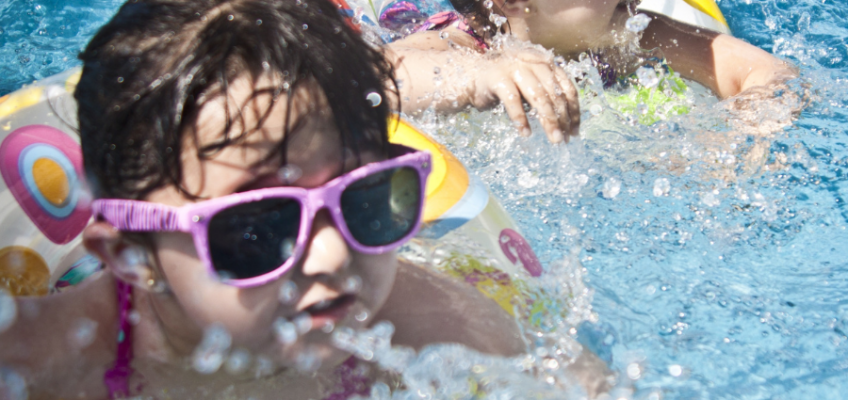For many parents, summers means more days spent splashing around at the beach or in the pool. While we can all agree that splashing around in the water is a great way to keep kids active and cool during the summer, it can also be very dangerous.
Water safety is critical because drowning is the second greatest cause of death for children in the United States. According to the American Red Cross, for every child that drowns, another five receive emergency medical attention for nonfatal submersion injuries.
Here are some guidelines for keeping your kids safe in the water.
When your child is near water, always keep them within arm’s reach. We call this touch supervision. Never leave them unsupervised. When supervising children, a responsible adult should avoid distracting activities such as reading or talking on the phone because drowning happens quickly and quietly.
In addition, children should wear water wings or armbands or “floaties” while swimming at home. In 2022, approximately 85% of those who drowned while boating did not wear a life jacket. Wearing U.S. Coast Guard-approved life jackets that are well-fitted to their size and fully fastened provides the best safety for children and adults in or near open or natural water, whether on a boat or in the water.
A report by the American Red Cross, 87% of drowning deaths among children under the age of five occur in home pools or hot tubs, with pools accounting for most cases. If you have a pool in your backyard, it is recommended that you surround it with a four-sided fence with self-closing and self-latching gates. The fence and barrier should follow the residential pool safety guidelines.
Swimming classes are another way to ensure your child’s safety around water. The American Academy of Pediatrics suggests that children are ready for swimming lessons by the age of four, but they can begin as early as one year.
Making swimming lessons more accessible has the potential to save lives. Nonetheless, even children who have taken swimming lessons need close and constant supervision when in or around water.
If children are energetic, minimize roughhousing and running about the pool. This helps to prevent falls, tripping and unintentional falls in water. As a parent, you can also receive CPR training in case your child falls into a pool and hurts themselves. Knowing the proper CPR technique can be useful in the event of a swimming accident.
If your child falls into the pool and swallows more water than they expected, get them out as soon as possible. If they stop breathing, become blue, or appear to be having difficulties breathing, call 9-1-1 immediately.
It is typically normal if your child coughs for a few minutes and then recover. However, if they continue to cough for an extended period of time and the cough does not appear to go away after a few hours, contact your pediatrician to have their heart and lung function checked.
Following these guidelines and talking about safety precautions to your children is all it takes to ensure a fun and safe time. Setting swimming safety habits will allow you and your family to begin making summer memories that will last a lifetime.
The content of this blog has been adapted and updated from our video library. If you wish to watch the video, click here.




